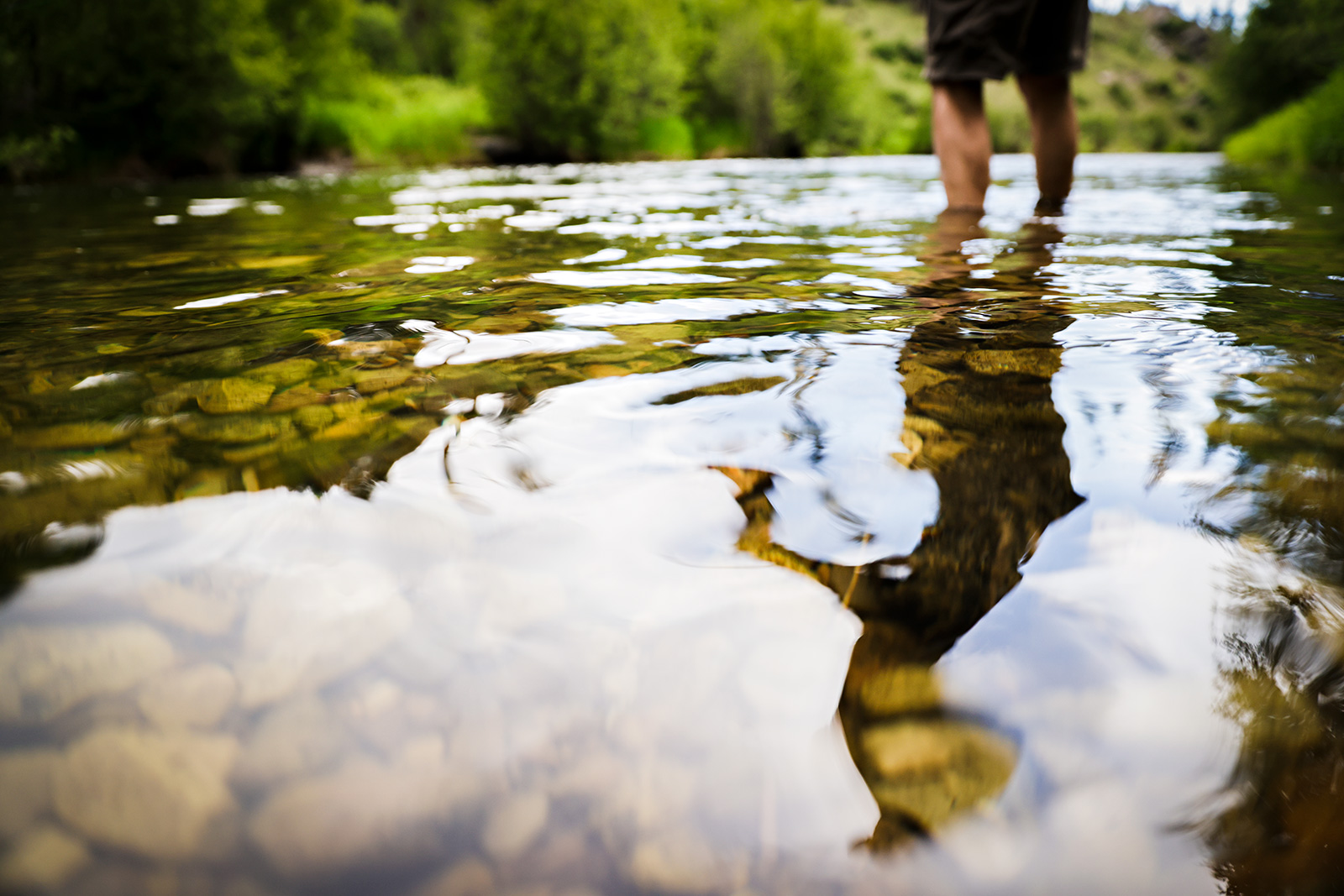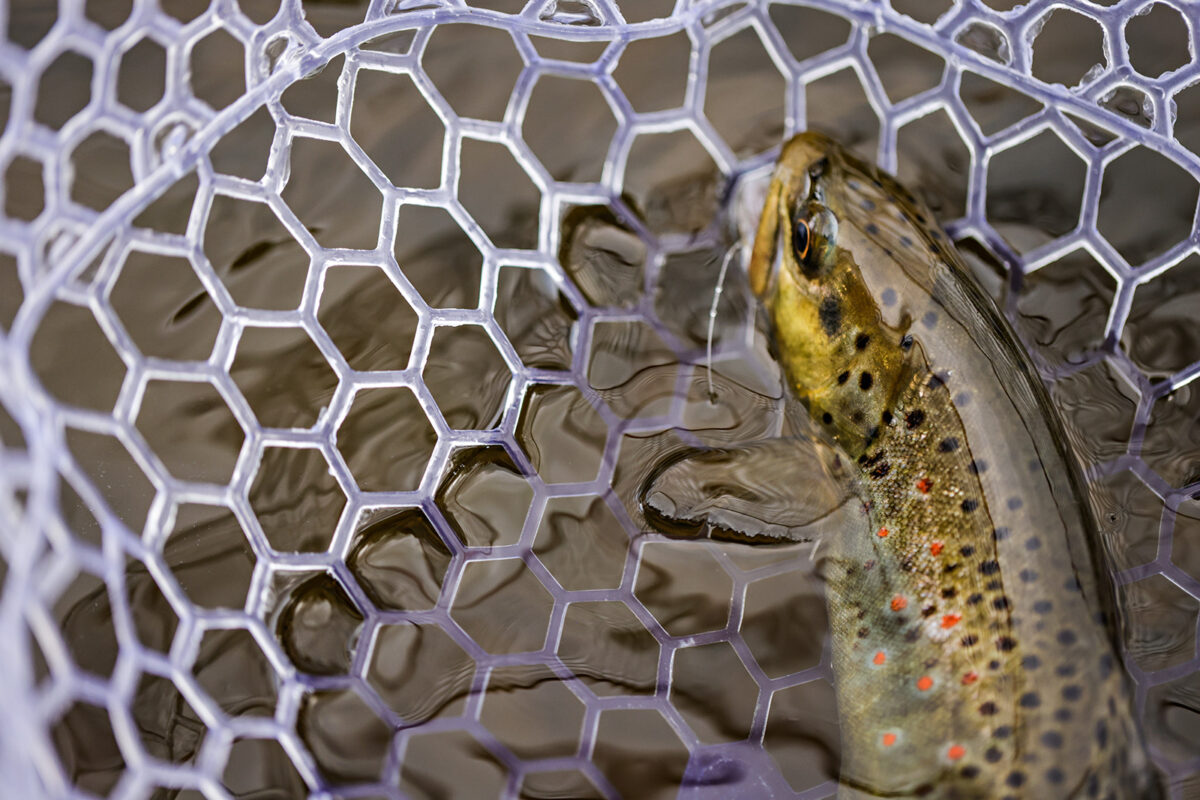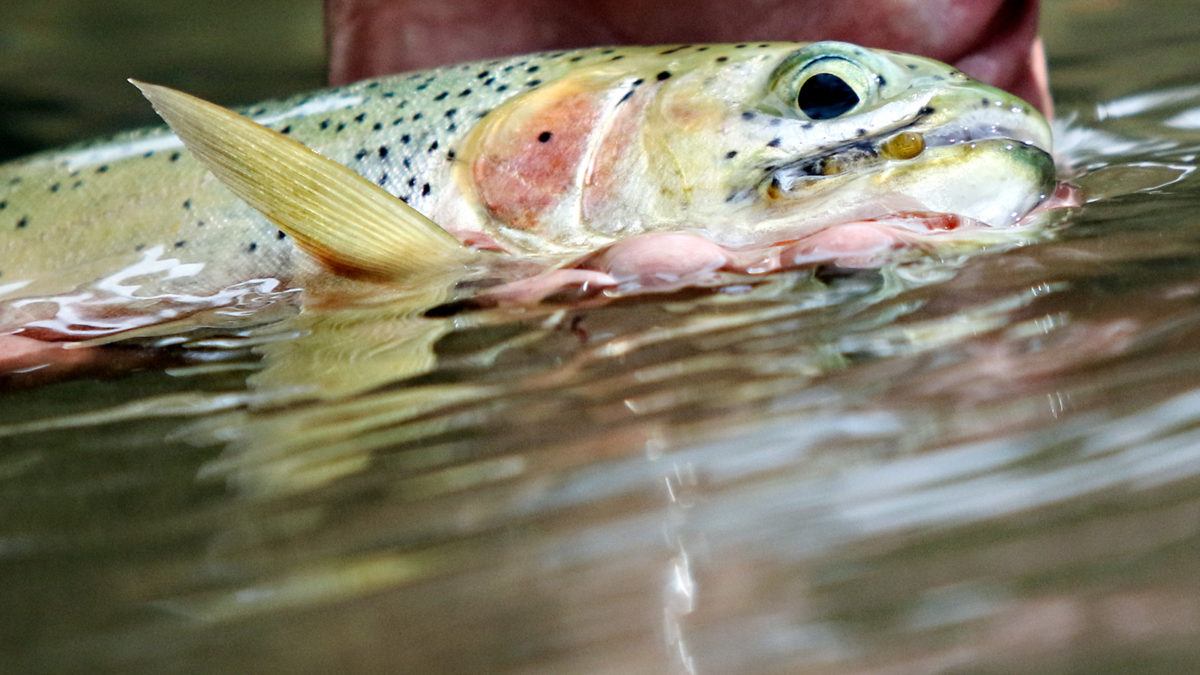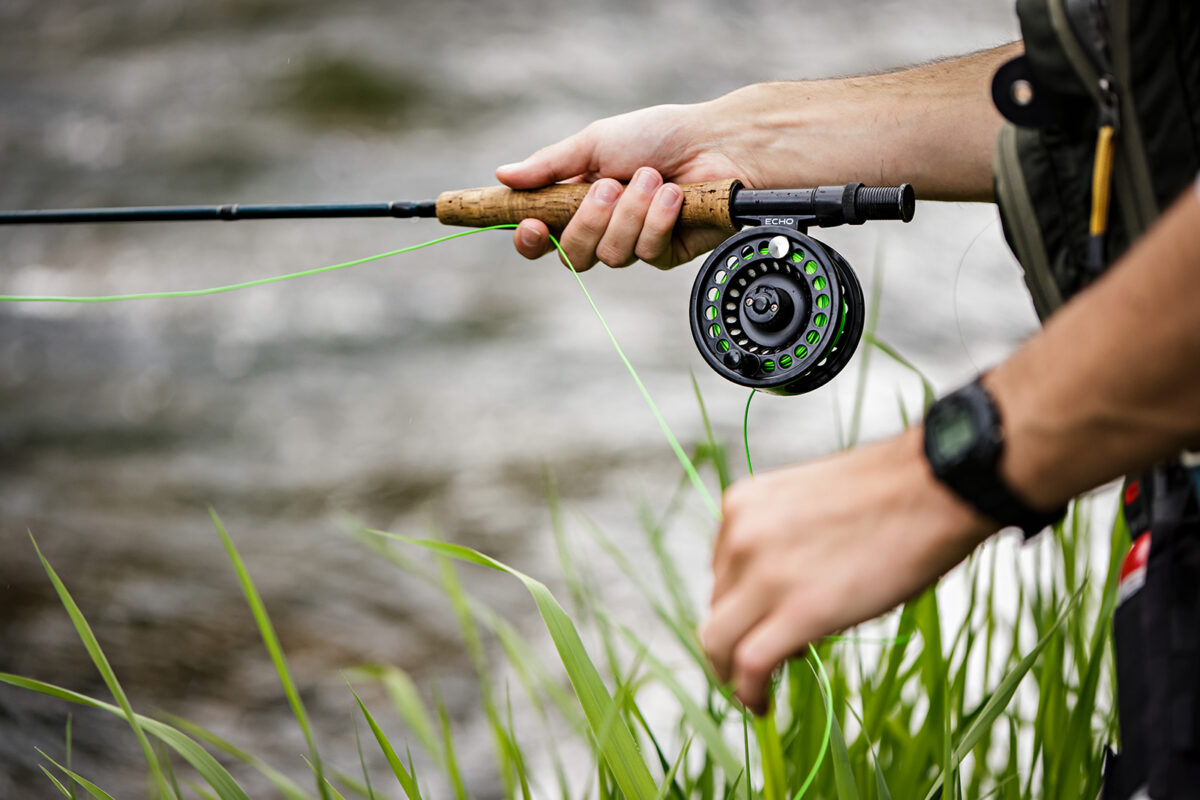In Lieu of Restrictions, FWP Urges Anglers to Reduce Stress on Flathead River Fish
As stream temperatures rise and flows diminish in northwest Montana, fisheries managers are asking anglers to limit their native cold-water trout species, or else face the prospect of closures
By Tristan Scott
Rivers and streams are running hot and low in northwest Montana, where for the second consecutive summer water temperatures in July are approaching thresholds that are stressful for trout, particularly westslope cutthroat and bull trout. To minimize that stress, local fisheries managers are encouraging anglers to voluntarily limit their fishing to the morning hours, when the water is coolest and the region’s native cold-water species are less stressed.
“Amid a summer heat wave, water temperatures across the region are approaching stressful levels for trout, particularly westslope cutthroat and bull trout,” according to a Thursday afternoon press release from Montana Fish, Wildlife and Parks (FWP). “Anglers can help reduce stress to cold-water fish, like trout, by fishing during the coolest times of day and fishing areas with less stressful temperatures and conditions, such as larger lakes or reservoirs, or higher elevation waterbodies.”
Although stopping short of implementing mandatory “hoot owl” restrictions on any of the local waters — a step the agency has never taken on the Flathead River system, which runs colder and clearer than Montana’s other rivers — FWP biologists say they are concerned about increasing water temperatures and heat-induced stress in the region’s wild trout populations on all three forks of the Flathead River, as well as on the main stem of the Flathead River upstream of Old Steel Bridge in Evergreen, the Swan River and the Thompson River.
Already this summer, FWP has enacted “hoot owl” fishing restrictions on more than a dozen rivers in western Montana, including parts of the Beaverhead, Big Hole, Bitterroot, Blackfoot, Clark Fork, Gallatin, Jefferson, Lower Madison, Silver Bow, Smith, and Sun rivers. The mandatory restrictions prohibit fishing after 2 p.m.
Fishing restrictions are designed to protect fish that become more susceptible to disease and mortality when conditions, such as low flows and high water temperatures, combine with other stressors, including catch-and-release fishing.

“It is uncommon for FWP to enact fishing restrictions in northwest Montana,” the release states. “FWP has never implemented hoot owl restrictions in the Flathead drainage. However, this summer fisheries biologists are concerned about increasing water temperatures and affected trout populations.”
Leo Rosenthal, a fisheries biologist in FWP’s Region 1, said the Flathead River basin is experiencing low flows and increasing water temperatures due to below-average winter snowpack, early runoff and hot, dry summer conditions. Flows in the North, South, and Middle forks of the Flathead River are below average for this time of year, while water temperatures are already hitting stressful levels for trout, particularly westslope cutthroat and bull trout.
FWP has administrative rules (ARM) in place that provide for angling adjustments during periods of drought and heat. Specifically, ARM 12.5.507 identifies different temperature criteria for different species of native trout. The temperature criterion for westslope cutthroat trout is triggered when water temperatures reach or exceed 66 degrees Fahrenheit for three consecutive days. The criterion for bull trout on the South Fork Flathead River, which is the only river in which FWP manages a catch-and-release fishery for bull trout, is 60 degrees, also for three consecutive days.
On July 17, water temperature gauges on the Middle Fork Flathead River at West Glacier registered a high of 63 degrees Fahrenheit, while temperatures on the North Fork Flathead River were “bumping right up against 66 degrees, which is the trigger for westslope cutthroat,” Rosenthal said.
On July 18, Rosenthal was preparing to trek into the portion of the South Fork Flathead River that cuts through the Bob Marshall Wilderness Area, where the agency has not installed temperature gauges, to deploy temperature data loggers.
“That’s the unfortunate thing about the South Fork. The only way we can get temperature data to make management decisions is to pack in our equipment,” Rosenthal said. “Sadly, we don’t have any way of monitoring temperatures on those wilderness segments in real time.”

Although the Flathead system doesn’t receive the same degree of angling pressure as other Montana rivers, which primarily support large populations of nonnative rainbow and brown trout, Rosenthal said the Flathead’s fisheries are strongholds for threatened species that are more dependent on cold, clear and connected watersheds.
“The difference between what goes on in other parts of western Montana and what goes on up here is our fish assemblage,” he said. “Southwest Montana rivers are going to hoot owl restrictions mostly for brown and rainbow trout fisheries, and ours are predominantly westslope cutthroat and, in the case of the South Fork, bull trout. Our statewide fisheries management plan sets the temperature trigger for brown and rainbow trout at 73 degrees. But up here, our fish are more sensitive.”
The Flathead watershed has historically avoided hoot owl restrictions due to its geography and geology; not only are the rivers fed by higher-elevation tributaries that come out of the mountains and stay cold even at lower flows, but they’re also more influenced by the groundwater.
“In the past, we’ve been fortunate in northwest Montana that we are the wettest part of the state, so we often have lots of water and our water is very cold,” Rosenthal said. “But last summer — and this summer is shaping up to be the same way — we didn’t have a good snowpack and we saw extremely hot temperatures during the month of July. So, now we are starting to worry about stream temperatures and it’s just not something we’ve had to deal with in the past. We have always been fortunate to have very cold water but the last two summers has shifted that.”

FWP’s administrative rules describe the following criteria FWP biologists consider for requesting restrictions or closures for fish: whether species of interest are present in significant numbers; whether temperature criterion has been met for three consecutive days; whether fishing pressure is high; and whether stream-flow conditions are deteriorating. Based on that criteria, FWP may request the Montana Fish and Wildlife Commission restrict or close fishing.
All stress to fish at this time of year is cumulative. Anglers can help reduce stress for fish by following these practices when catching and releasing fish, though fish mortality may still occur:
- Remember: Only single-pointed hooks are allowed in the Flathead drainage upstream of Teakettle Fishing Access Site on the mainstem Flathead River, and on the Swan River from Piper Creek Bridge downstream to Swan Lake. Treble hooks and double hooks are prohibited in these stretches.
- Fish during the coolest times of day, where permitted.
- Land the fish quickly.
- Wet your hands before handling the fish.
- Keep the fish in water as much as possible.
- Remove the hook gently. Using artificial lures with single and barbless hooks can make hook removal faster and easier.
- Let the fish recover before releasing it.
- Consider fishing areas with less stressful temperatures and conditions, such as larger lakes or reservoirs, or higher elevation waterbodies.
For more information and updates, visit https://fwp.mt.gov/news/current-closures-restrictions/waterbody-closures or contact the FWP Region 1 office at 406-752-5501.